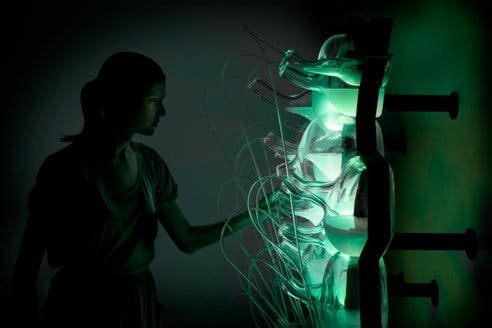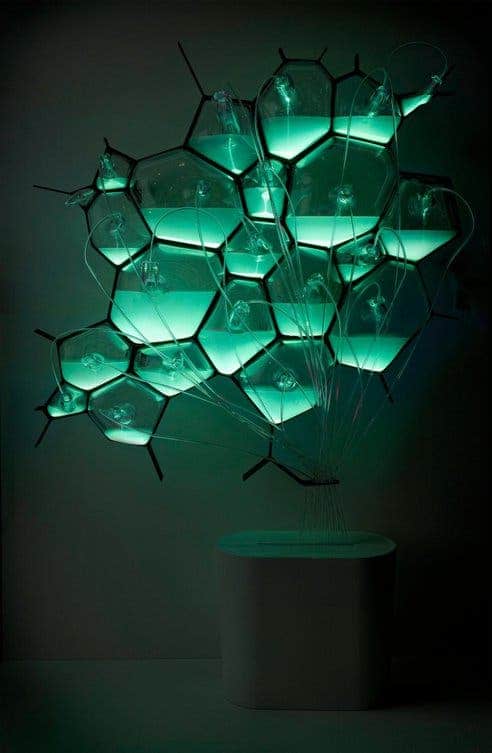We at ZME Science love futuristic designs, but above all we love innovative energy efficient solutions. The latest avantgarde lighting set-up from Philips would fit better in an art gallery than in a home, however what it lacks in practicability, it more than makes up in beauty, and moreover in principle – that energy is all around us, and that living beings are capable of generating energy.
This system isn’t powered by grid electricity, nor solar or wind energy, but by bacteria.
“The concept explores the use of bioluminescent bacteria, which are fed with methane and composted material (drawn from the methane digester in the Microbial Home system). Alternatively the cellular light array can be filled with fluorescent proteins that emit different frequencies of light.”
The bacteria feed on methane and composted material (drawn from the methane digester in the Microbial Home system), which then allows them to emit soft green light by bioluminescence. The light itself is fade, and is far from being capable of powering an office space, however it’s more than suited for a mood setter in your bedroom or simply as a living piece of art.
Philips believes that the concept could extend into more practical fields than one would expect. Bioluminescence produces low-intensity light, more suitable for tracing, warning, ambience and indication than functional illumination, so tomorrow’s road markers or sensor lights might be powered by bacteria. If you think a bit about it, it doesn’t depend on electricity grid, the sun, wires and so on, making it a perfect possible solution for applications where the environment is subjected to constant unexpected changes.
“This represents a new genre of ‘living’ biological products. We have involved the microbial community in the home to provide the soft mood lighting typical of luminescence by using energy stored in our waste streams. Potentially biological products could be self-energizing, adaptive, responsive, self-repairing, act as biological sensors to environmental conditions, and change the way we communicate information.”
Philips via Treehugger. Photos courtesy of Philips.




